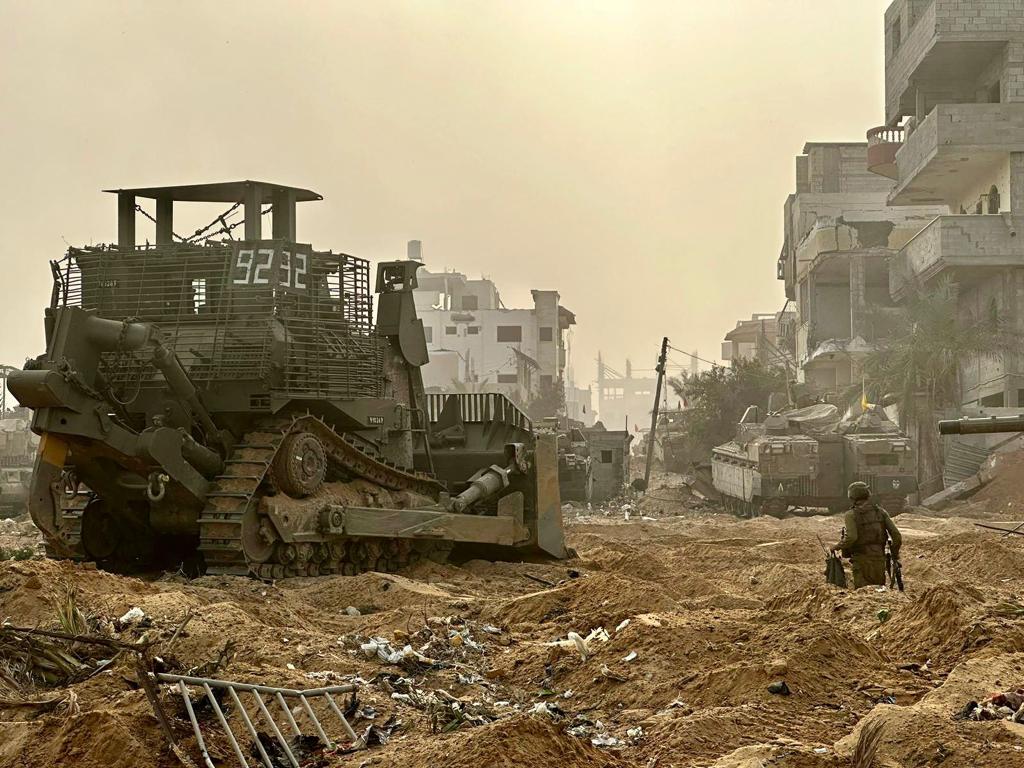While all the main leaders of the imperialist powers, from Biden to Scholz, Macron and many others, have been shedding crocodile tears about the “excessive civilian death toll” in Gaza, in practice they have all been collaborating with the Israeli government. Not only with military aid but also in strangling the Palestinian people economically and socially. They have helped create the material conditions upon which no feasible Palestinian self-administration is possible. They are openly collaborating with Netanyahu as he and his far-right Zionist friends attempt to destroy the little that is left of Palestinian territory.
Beyond the genocidal military campaign in Gaza and the constant expansion of the settlements in the West Bank, there is another war going on on the economic front. It has included cutting funding to UN aid agencies, withholding tax revenues to the Palestinian Authority, and denying Palestinian workers the jobs they had in Israel before 7 October.
Let us remind ourselves of the actual social and economic conditions in both Gaza and the West Bank before the 7 October attack. Net unemployment in the Palestinian Territories, Gaza and the West Bank already stood at around 25 percent, although the situation in Gaza was much worse.
A 2009 Oxfam report, ‘The Gaza Strip: A Humanitarian Implosion’, explained that as early as 15 years ago: “The situation for 1.5 million Palestinians in the Gaza Strip [now they are 2.3 million] is worse now than it has ever been since the start of the Israeli military occupation in 1967. The current situation in Gaza is man-made, completely avoidable… The severity of the situation has increased exponentially since Israel imposed extreme restrictions on the movement of goods and people in response to the Hamas take over of Gaza…” [My emphasis]
Unemployment in Gaza stood at 40 percent, but was steadily rising towards 50 percent. The levels of poverty in Gaza had massively increased, with 80 percent of families relying on humanitarian aid. This single fact emphasises how crucial aid is, like that provided by agencies such as UNRWA (the United Nations Relief and Works Agency for Palestine Refugees in the Near East).
By 2009, almost all of Gaza’s productive economy had been brought to a standstill by Israel’s imposition of a strict economic blockade. Industry almost ceased to exist; agriculture was in crisis; and the thousands of workers who previously crossed into Israel to work no longer had jobs.
The report refers to “an imprisoned population”. In these conditions, the head of UNRWA pointed out that, “Hungry, unhealthy, angry communities do not make good partners for peace.” This, of course, fell on deaf ears in the Israeli government.
Economic blockade of Gaza
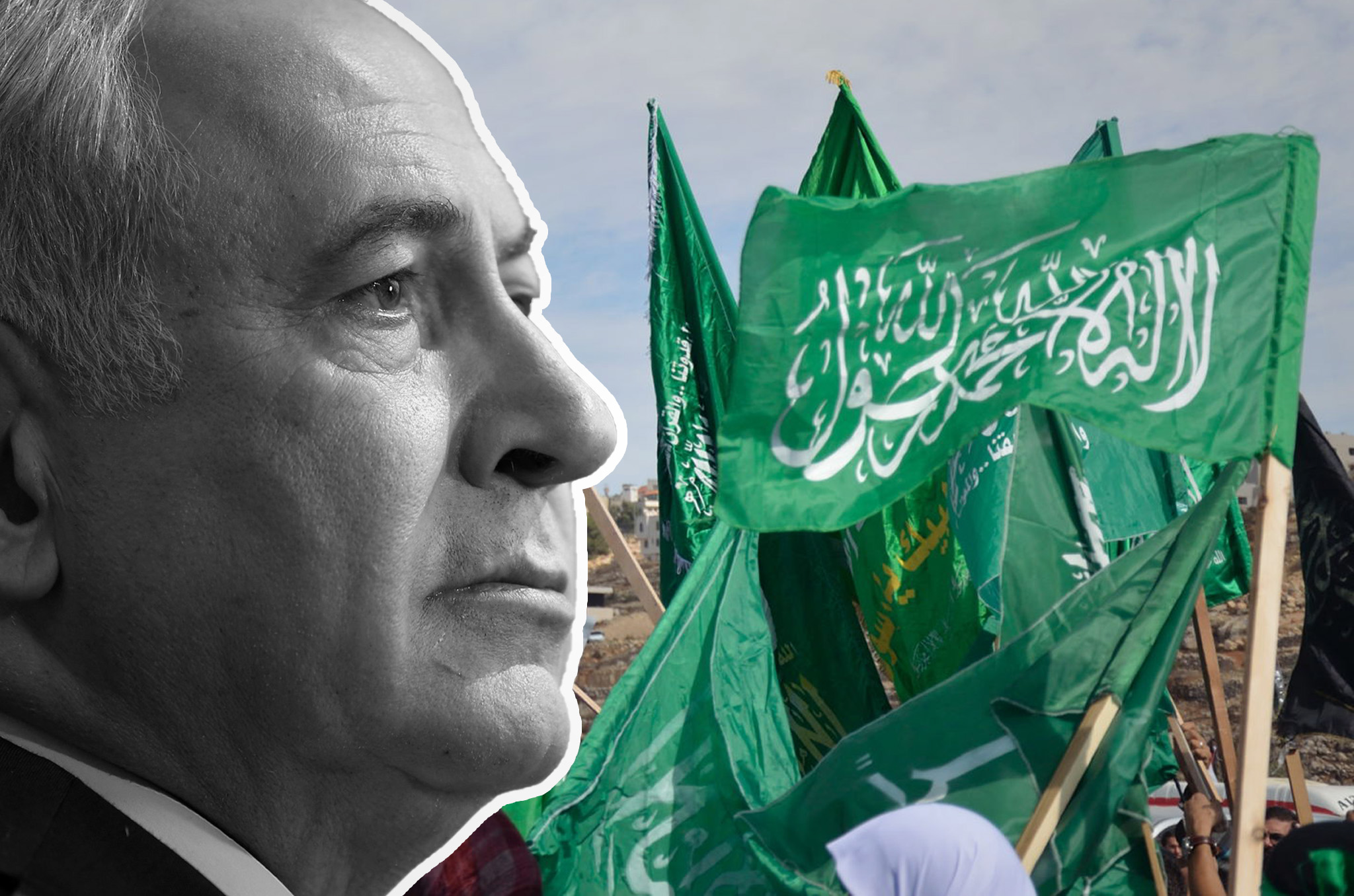 The economic blockade of Gaza was a means of punishing the people for daring to support a force not to the liking of the Israeli authorities / Image: own work
The economic blockade of Gaza was a means of punishing the people for daring to support a force not to the liking of the Israeli authorities / Image: own work
These were the conditions imposed on the Gazan population long before the 7 October attack. The official reason for this brutal policy was the emergence of Hamas as the first party in the 2006 elections, and the consolidation of its position a year later through an armed takeover of the Gaza Strip.
The electoral successes of Hamas were due to the widespread disillusionment among the Palestinian population towards Fatah and the PLO that had been governing both the West Bank and the Gaza Strip. This was because of the rampant corruption, and its de facto collaboration with Israeli security forces in policing the Palestinian people, rather than protecting them.
Thus, the economic blockade of Gaza was a means of punishing the people for daring to support a force not to the liking of the Israeli authorities. The message was clear: if you don’t vote for the Palestinian leaders who are collaborating with Israel, then we will strangle you economically and bomb you when we feel the need.
This was the situation in Gaza as described in an August 2023 UNRWA report:
“The economy and its capacity to create jobs have been devastated, resulting in the impoverishment and de-development of a highly skilled and well-educated society. Access to clean water and electricity remains at crisis level and impacts nearly every aspect of life. Clean water is unavailable for 95 per cent of the population. Electricity is available up to an average of 11 hours per day as of July 2023. However, ongoing power shortage has severely impacted the availability of essential services, particularly health, water, and sanitation services, and continues to undermine Gaza’s fragile economy, particularly the manufacturing and agriculture sectors.”
Although the situation in the West Bank was not as severe as that in Gaza, by 2021 unemployment had reached 25 percent and youth unemployment 40 percent, with close to 20 percent living below the poverty line. The West Bank depended heavily on jobs inside Israel, with around 23 percent of the working population employed either in Israel or in Israeli settlements in the West Bank.
Major powers cut funding
Now the process of strangulation is being taken to new heights. The delivery of aid to Gaza is being made ever more difficult, if not impossible to carry out, by Israel limiting the number of trucks allowed in and refusing to guarantee safe passage for aid deliveries.
Before October last year, an average of 500 trucks of supplies were entering Gaza every day. In January, only 140 were getting in. Now the number is down to around 60. In a situation where all reserves have been depleted, starvation has become rampant, especially in the north. People are drinking dirty water and eating whatever they can put their hands on, including animal feed.
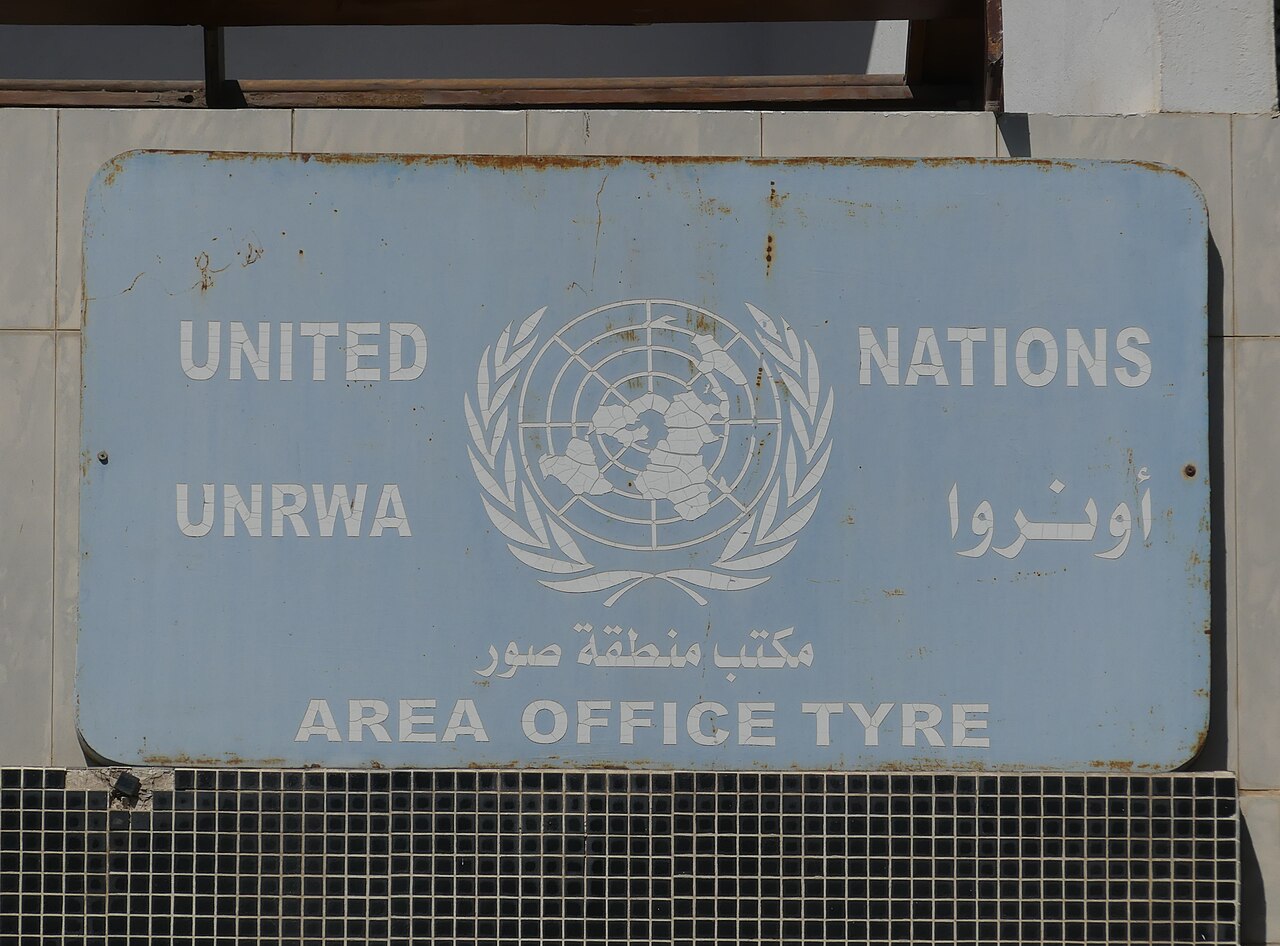 The delivery of aid to Gaza is being made ever more difficult / Image: RomanDeckert, Wikimedia Commons
The delivery of aid to Gaza is being made ever more difficult / Image: RomanDeckert, Wikimedia Commons
Israel is also going after the funding of aid agencies. Netanyahu has latched on to the fact that, according to an Israeli intelligence dossier, a dozen individuals who were employed by UNRWA in the Gaza Strip (compared to 13,000 in total) took part in the 7 October attack in some capacity. The Washington Post has looked into these allegations, but could not independently verify them. UNRWA chief Philippe Lazzarini has pointed out that Israel has not provided any evidence for its allegations. Still, they are being used as a lever by Israel to bend the arms of their imperialist allies.
The mass media in the West have reported these allegations as fact and the US, immediately followed by the UK, Germany, France, Italy, Canada and Australia, have suspended funding to the agency, without regard for the humanitarian consequences they all seemed to be ‘very concerned about’ just a minute before. Others followed suit, with the full list of countries previously accounting for over half of UNWRA’s aid budget. This is despite the fact that, when the allegations were presented to the United Nations, the individuals listed – some of whom are now dead – were quickly dismissed and an investigation was launched.
Compare the speed with which the imperialists cut desperately needed aid for the Palestinians of Gaza, to their continued military aid to Israel as it destroys everything that makes life possible in the Strip. Biden is pushing through a bill for more aid to Israel, most of it for military purposes and only a small fraction for “humanitarian aid”, with a specific proviso that none should go to UNRWA. The contrast is glaring.
More than two million people in Gaza presently depend on UNRWA “for their sheer survival,” as Philippe Lazzarini, the agency’s commissioner general has stated. In January, close to 1.4 million Gazan refugees were sheltering in 155 UNRWA structures, and a further 500,000 were receiving UNRWA services. Johann Soufi, a lawyer and former director of the agency’s legal office in Gaza, told Agence-France Presse that the sanctioning of UNRWA, for the alleged responsibility of a few employees, is tantamount to collectively punishing the Gazan population.
For quite some time, UNRWA has been subject to threats and cuts to funding. Already in August 2018, then US President Trump announced that the US would unilaterally stop its contribution. The truth is that the Israeli government has for many years been trying to get UNRWA’s funding cut. Israeli governments have been particularly opposed to the agency because they claim its definition of a Palestinian ‘refugee’, which encompasses 5.9 million people, is too broad, and therefore nurtures the hope that they will one day be able to return to their homeland.
The problem for the Zionists is the changing demographic balance between Palestinians and Jews living in historic Palestine, i.e. Israel, Gaza and the West Bank. In this area, there are now 7.4 million Palestinians against 7.2 million Israeli Jews. This includes the Palestinians who are citizens of Israel – second-class citizens with fewer rights – who number close to two million of the overall population of 9.3 million. The birth rate among Palestinian women is roughly 4 children, compared to 3 for Israeli women.
At this rate, the overall Palestinian population living within historic Palestine will continue to grow relative to the Jewish population. This also explains the position of the extreme Zionists, who want Palestinians living in Israel to be expelled together with those living in Gaza and the West Bank, and for the emigration of Jews from other countries to be stepped up, together with the settler programme.
According to population estimates prepared by PCBS, there were “about 14.3 million Palestinians in the world in mid-2022”. Of these, around three million are in Jordan, three-quarters of whom have been granted Jordanian citizenship. Around half a million are living in Syria; 400,000 in Lebanon, officially as refugees; and around 250,000 in Saudi Arabia. That means that 11-12 million Palestinians are living in the region, the rest having emigrated to Europe, the Americas and other parts of the world.
The Zionists want to see a significant number of refugees granted full citizenship in the countries where they presently reside, such that over time they could be absorbed and integrated, thus losing their refugee status and ending all hope of returning to their historical homeland. The fact that Jordanian citizens of Palestinian origin are expected to adopt a Jordanian identity is an indication of what the Zionists would like to see across the region, i.e. a de facto elimination of a Palestinian national identity. This all explains why the Israeli government wants to see an end to UNRWA as a body. According to a 2 February article in The Guardian, UNRWA could be forced to shut down its operations in Gaza if funding is not restored soon. For Israel, however, it seems that even succeeding in getting UNRWA funding suspended is not enough. Since October, there have been 63 direct hits on UNRWA installations, with a further 69 sustaining some degree of damage. A total of 319 people sheltering in UNRWA installations have been killed, with over one thousand being injured. Not content with this, Israel’s foreign minister, Israel Katz, has now stated that they will be taking steps to completely remove UNRWA from the Gaza Strip after the war.
Israeli stranglehold over Palestinian economy
When the Palestinian Authority was set up on the back of the Oslo Accords back in 1994, an arrangement known as the Paris Protocol was established whereby Israel collects income tax on behalf of the Palestinian Authority and then makes monthly transfers, pending the approval of the Israeli Ministry of Finance.
This was supposed to be a temporary, five-year arrangement, after which control was supposed to pass to the Palestinian Authority. 30 years on, no such transition has been enacted. The reason for this is abundantly clear: it gives Israel an important lever with which to blackmail the Palestinian Authority.
Even after the Gaza Strip fell under Hamas control in 2007, many public sector workers there kept their government jobs and continued to receive their wages, which were paid with the transferred tax revenues from the Israeli Ministry of Finance. Presently, that post is occupied by Bezalel Smotrich, a settler himself, and one of the most extreme, ultra-orthodox, right-wing Zionists in Netanyahu’s government.
In November, shortly after the 7 October Hamas attack on southern Israel, the Netanyahu government decided to hold back payments – a total of $275 million, including sums collected before the attack – that were destined for public employees in the Gaza Strip, arguing that these funds could end up in the hands of Hamas. In reaction to the cut in funding, the PA refused to receive the reduced revenues, demanding the payment of the full amount owed.
The most recent development has seen Israel withholding these tax revenues, refusing to send them on to the PA. Instead, it sent them to Norway, and they were not to be released without the approval of the Israeli government. It was Biden himself who asked Netanyahu to send the tax revenues to Norway for “safekeeping” as a means of soothing the nerves of his extreme right-wing ministers who have been insisting that no money should make its way to Hamas in Gaza.
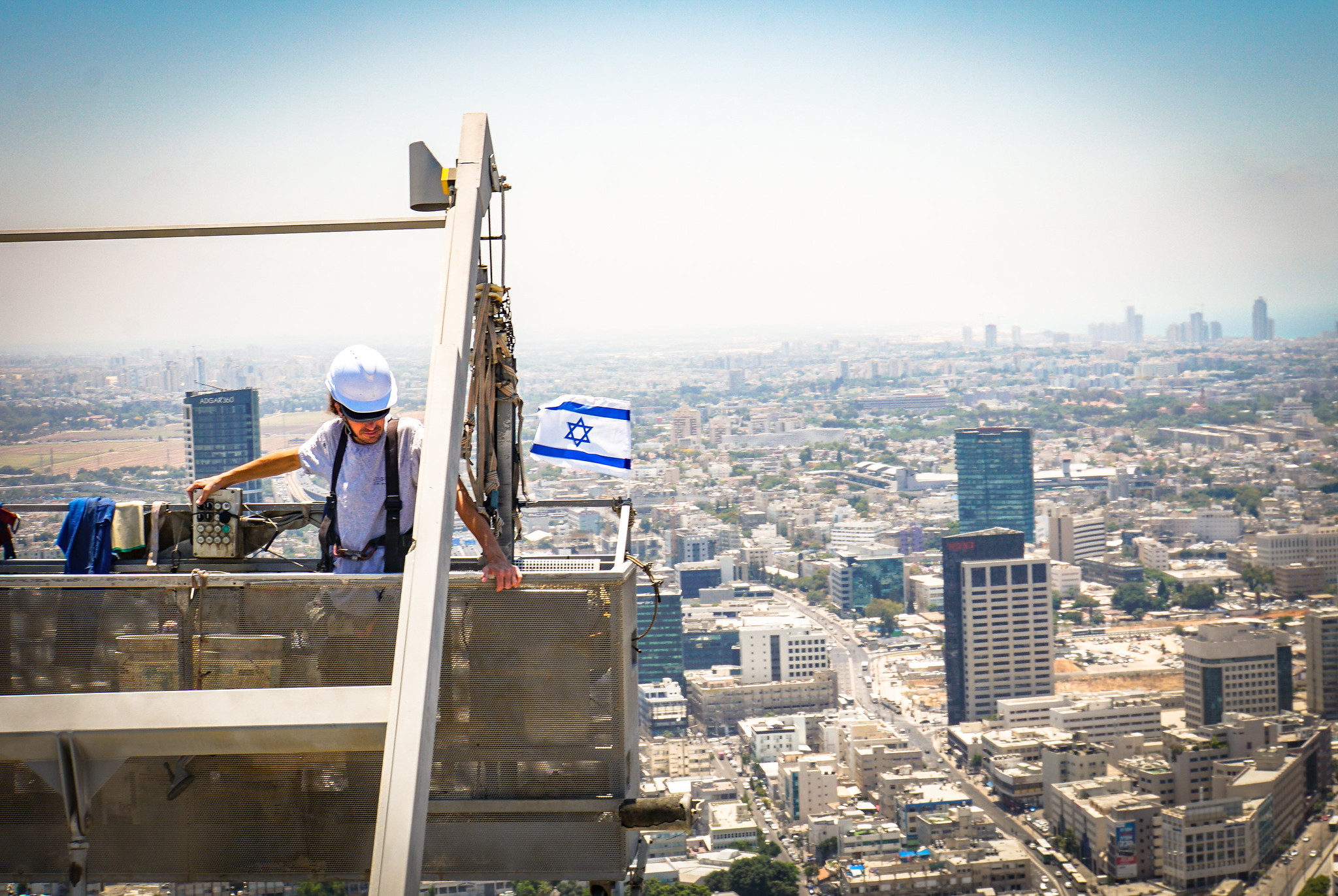 Israel has suspended work permits for around 130,000 Palestinian workers / Image: Ted Eytan, Flickr
Israel has suspended work permits for around 130,000 Palestinian workers / Image: Ted Eytan, Flickr
Since then, Norway has agreed to transfer funds designated for the West Bank while holding back those destined for Gaza. Gaza is administered by Hamas, but the PA has been financing essential expenditures including, for example, the wages of its health workers. Now that funding has been cut, the situation in Gaza will continue to worsen.
Every month, Israel collects around $188 million in tax revenues on behalf of the Palestinian Authority – $2.25 billion a year. This is not an insignificant figure, amounting to 64 percent of the Authority’s revenues. At present there are around 150,000 public employees on the PA’s wage bill, across both Gaza and the West Bank.
The result of this blocking of funds has meant that many of these employees have not been receiving their full wages. Already, back in 2021, their wages had been cut by 25 percent due to constant holdbacks on the part of the Israeli government. The Palestinian Authority is in a severe financial crisis, with a huge build-up of unpaid debt. The situation has become so bad, that in early February the PA was forced to announce a 40 percent pay cut for its public sector employees.
Norway’s agreement to release the funds destined for the West Bank can be explained by the fear of the imperialists that the PA in the West Bank could be facing imminent collapse. The situation there is already on the edge of a major social explosion. Constant attacks by settlers and the IDF against the local population led to close to 500 Palestinians being killed and more than 12,000 injured in 2023 alone.
Worsening the situation even further in the West Bank is the fact that Israel has suspended work permits for around 130,000 Palestinian workers who had been travelling into Israel from the West Bank. A total of around 200,000 Palestinians have lost their jobs. Over half of these were working in the Israeli building industry. A Palestinian building worker in Israel could earn over $3,000 a month, which allowed for a reasonable standard of living for someone living in the West Bank.
This source of income has suddenly dried up. Now, a huge number of unemployed workers in the West Bank are being forced to sell off anything they can in a desperate attempt to get together enough money to feed their children and pay the bills. Many have had their water and electricity cut off because of unpaid bills.
Unemployment in the Palestinian territories has shot up from around 25 percent to 47 percent since October, while the Palestinian economy as a whole has shrunk by 35 percent. Now, a huge layer of the population is literally living by the day, not knowing how they will survive until the end of the month.
Situation in Gaza is at a tipping point
Meanwhile, in Gaza the population is facing the threat of famine according to many observers on the ground. Many families are spending hours every day walking long distances and queuing to get what little food and water is still available. At the end of December, a report by the Famine Review Committee (FRC) revealed that at least one-quarter of Gazans (over 500,000 people) were facing the prospect of extreme food shortages.
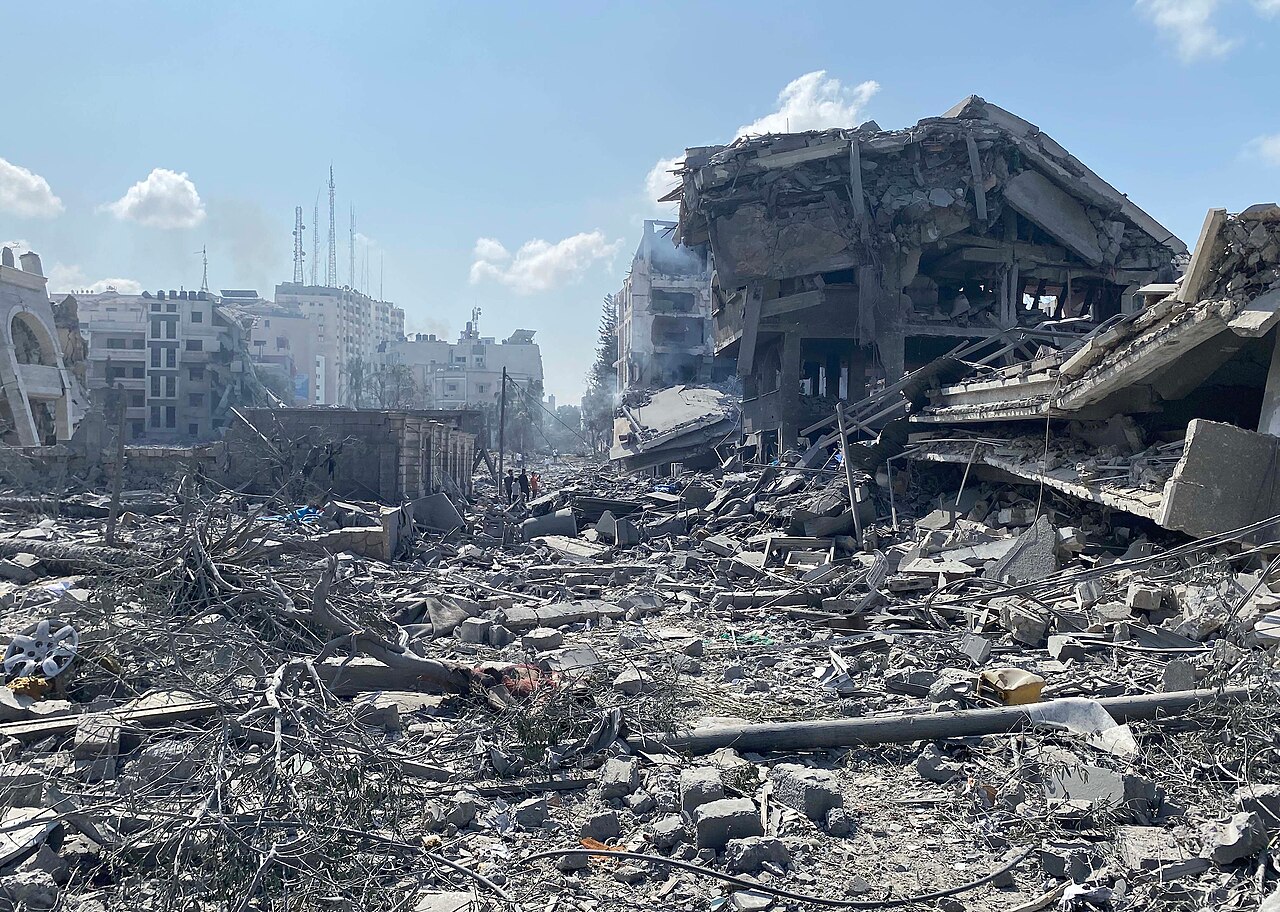 The situation in the north of Gaza is truly dramatic / Image: Wafa, Wikimedia Commons
The situation in the north of Gaza is truly dramatic / Image: Wafa, Wikimedia Commons
Children in particular are the most vulnerable in such a situation, especially in the very early years, when any prolonged period of malnutrition can impair physical and mental development. There are presently over 130,000 children in Gaza below the age of two. Therefore, this situation can have long-term effects on children’s health, even once the war is over.
Local farming, thanks to the constant and massive bombing, has completely collapsed. Much infrastructure – such as bakeries and food warehouses – has either been destroyed or forced to close. Food supplies from outside Gaza are all that is left to the people camped out in and around Rafah and other cities.
Action Against Hunger, based in Washington D.C., said on 17 February: “If the situation continues, we will see one of the biggest disasters we have faced as humanitarians. It will be due to hunger, disease, and the very polluted and dangerous environment in Gaza, resulting from the residuals of the thousands of bombs, the white phosphorus, the raw sewage floating all over the place, and the unsafe water being consumed as people don’t have other choices.”
The situation in the north of Gaza is truly dramatic. There are still around 300,000 people left in the most horrendous conditions. According to a recent BBC report, in the isolated north of Gaza “children are going without food for days, as aid convoys are increasingly denied permits to enter.” People are now starving.
In these conditions of almost complete collapse of basic infrastructure, combined with massively reduced aid, infectious diseases are spreading at alarming rates. Diarrhoea has affected over 100,000 people since October, half of these being children below the age of five, a 25-fold increase on previous levels. Tens of thousands of respiratory infections are being reported. Hepatitis is on the increase and numerous other conditions are rising. The Global Nutrition Cluster, a partner of Unicef, has warned that an “explosion in child mortality” is imminent.
Concentrating the minds of the imperialists
The imperialists have good reason to be concerned that the situation could be reaching a tipping point. The Palestinian people are being pushed well beyond what is humanly tolerable. What we are looking at here is the threat of a complete collapse of the Palestinian Authority in the West Bank, on top of absolute devastation in Gaza.
All this is beginning to seriously worry the imperialists who are watching as the territories sink into a quagmire. They can see the time bomb ticking, and they understand that if the population reaches the limit of what it can take, they could be faced with a generalised people’s uprising.
They understand that to maintain some degree of stability in the region, the Palestinians must be guaranteed a basic minimum of a civilised existence, with food, housing, basic healthcare, jobs and income, and at least a thread of hope that one day they may have a homeland of some kind in which they can rebuild their lives. As things stand, these hopes are being destroyed not just in Gaza but also in the West Bank.
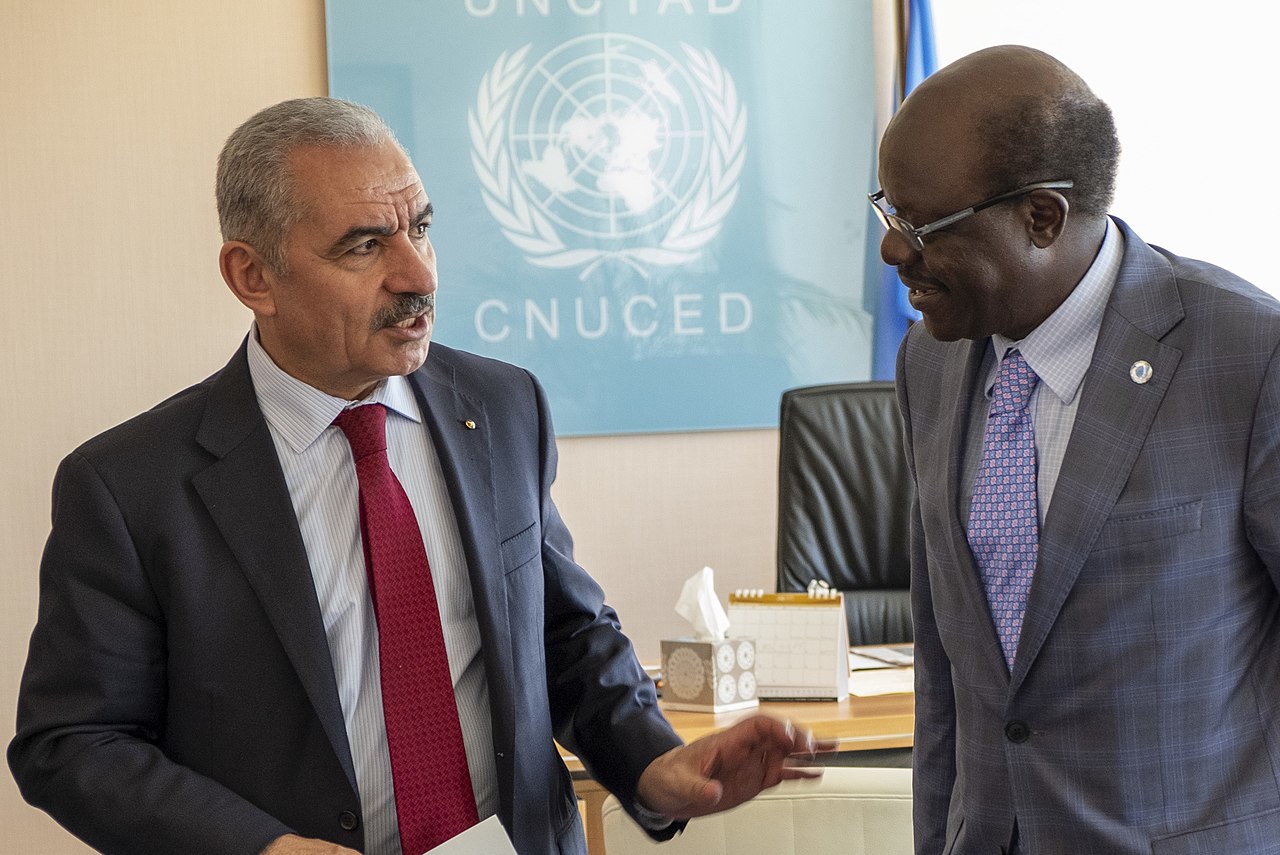 The latest turn in events, with the Palestinian Prime Minister Mohammad Shtayyeh resigning, is a confirmation of the political crisis facing the PA / Image: UNCTAD, Wikimedia Commons
The latest turn in events, with the Palestinian Prime Minister Mohammad Shtayyeh resigning, is a confirmation of the political crisis facing the PA / Image: UNCTAD, Wikimedia Commons
The latest turn in events, with the Palestinian Prime Minister Mohammad Shtayyeh resigning, is a confirmation of the political crisis facing the PA. It seems that his resignation is part of a move towards some kind of technocratic government, which would also govern Gaza once the war is over.
The term ‘technocratic government’ is a euphemism for an unelected government that will push through the programme of the ruling elite. The Abbas-led PA is discredited in the eyes of most Palestinians, so they wish to impose on them the same collaborators but behind a new mask. This is the programme of US imperialism for the Palestinians.
For now, however, Netanyahu is not listening. As we explained in a previous article, an all-out onslaught on Rafah would tip the situation over the edge. It could open up a scenario where hundreds of thousands of desperate people presently camped out in tents – possibly up to a million – spill over the border into Egypt.
It now seems to have been confirmed that the Egyptian authorities are taking precautionary measures should such a scenario materialise. The latest satellite images seem to indicate that works are taking place along Egypt's border with Gaza to create a walled-off buffer zone to receive Palestinian refugees should Israel proceed with its ground offensive into Rafah.
This is all concentrating the minds of the imperialists. They are now bringing pressure to bear on Netanyahu to accept a temporary ceasefire and lift barriers to aid. The US has drafted a UN Security Council resolution of its own, calling for a “temporary ceasefire” in Gaza, but with the added proviso of “as soon as practical”.
We should not have any illusions here. US imperialism is not working for an end to the bombing of Gaza. They are seeking only a temporary halt – or a “pause” as they call it – in order to release some of the pressure that is building up. This is confirmed by the fact that they recently vetoed a resolution from Algeria at the UN Security Council which called for an immediate ceasefire.
Nonetheless, as the Financial Times commented, “The use of a UN Security Council Resolution [by the US] to call for a shift in Israel’s strategy represents a big diplomatic milestone for the US…” Under such pressure, the Israeli government has delayed its planned ground offensive into Gaza until 10 March. It has issued a deadline that if by then Hamas has not freed all the hostages the offensive will be launched.
This date is no accident. Ramadan begins this year on the evening of Sunday 10 March! To launch the ground offensive on Rafah on that day would have a hugely symbolic significance for Muslims around the world, and in particular in the Middle East. Effectively, Netanyahu would be spitting in the faces of millions of Muslims in the region.
In the context of the growing social turmoil in many of the countries of the Middle East, this could lead to mass upheaval and movements of revolutionary dimensions. That is why the imperialists, with the US playing an important role, are trying to pull back from the abyss.
They desperately want someone in the saddle in Israel that they feel they can trust. Gantz, Israel’s defence minister, is hailed as “the grown-up in the room of the Israeli government”, according to the New York Times, and “the man most likely to replace Mr. Netanyahu and his disastrous government”.
Gantz, however, is no saint. As Chief of General Staff under Netanyahu, he became known for his ruthless handling of ‘Operation Protective Edge’, the 2014 bombing of Gaza that killed more than 2,300 Palestinians and maimed more than 10,000.
He recently stated that: “The world must know, and Hamas leaders must know – if by Ramadan our hostages are not home, the fighting will continue everywhere, to include the Rafah area.” This is confirmation of the fact that when it comes to crushing the Palestinians, all the top Zionist politicians have the same position.
What is rational is not always possible
The war in Gaza has already destabilised the region, and risks destabilising it further. If the offensive in Rafah goes ahead, it will dramatically undermine the surrounding Arab regimes, who will be facing the threat of revolutionary upheaval. It would send shockwaves reverberating around the world.
From the point of view of the objective needs of the capitalist class globally in this situation, it is logical that the imperialists should seek to pull Netanyahu back. Biden has now confidently announced that by Monday 4 March, a ceasefire – of up to six weeks according to some reports – will be in place.
Biden’s optimism, however, is not replicated either inside Israel or in Gaza. The reasons for this are to be found in the fact that a ceasefire is being presented as a temporary measure, and not as an end to the war, one of the key demands of Hamas.
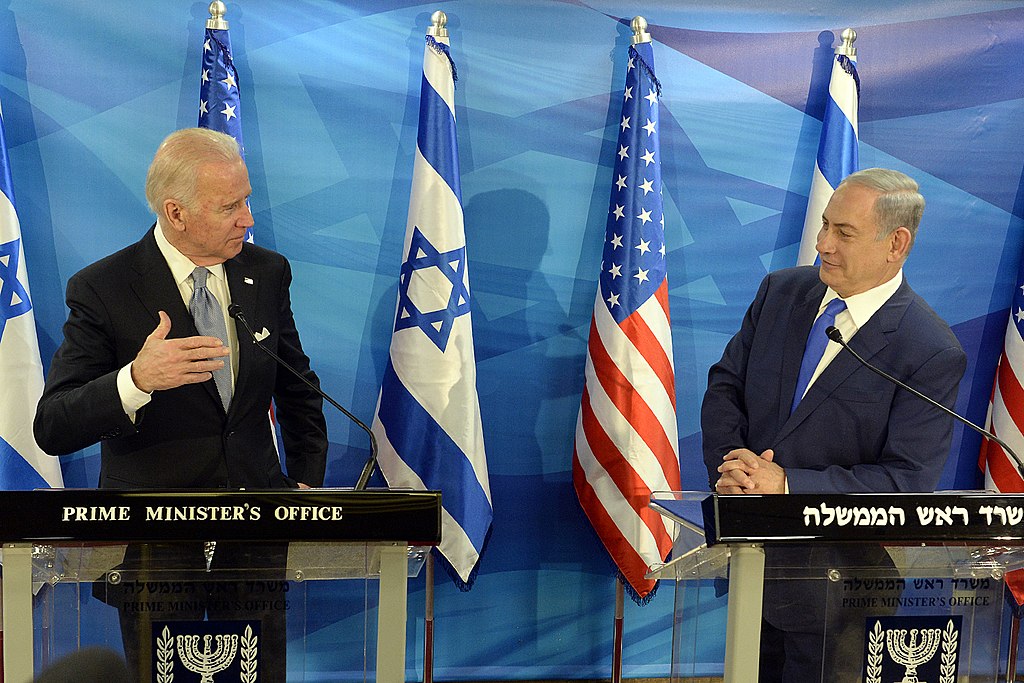 Biden has now confidently announced that by Monday 4 March, a ceasefire will be in place / Image: U.S. Embassy Tel Aviv, Wikimedia Commons
Biden has now confidently announced that by Monday 4 March, a ceasefire will be in place / Image: U.S. Embassy Tel Aviv, Wikimedia Commons
Basem Naim, the head of Hamas’ political division in Gaza, has stated that Biden’s announcements were “premature” and did “not match the reality on the ground”, while Israeli officials have stated that Hamas was continuing to push “excessive demands”.
The deal being discussed would also only allow for the release of 40 hostages held by Hamas in exchange for 400 Palestinian prisoners. That would still leave the bulk of the remaining hostages in the hands of Hamas. This means that even if such a deal were agreed, it would only give the Palestinian people in Gaza a temporary respite and not an end to the war.
Netanyahu continues to insist that, even if there is a ceasefire agreement, he will push on with his preparations for an attack on Rafah, which does not bode well. The problem here is that the wider, more general interests of global capitalism do not match the interests of Netanyahu and his far-right cabinet colleagues, and also of a significant section of the Zionist ruling class.
Even the so-called ‘moderate’ Gantz differs from Netanyahu, not over whether to keep squeezing the Palestinians out of what little is left of their historical homeland, but at what tempo and how. He may also be somewhat more sensitive to the pressure of Israel’s imperialist backers.
For Netanyahu, on the other hand, to retreat and leave Hamas in place in Gaza would mark the end of his political career. The far-right would provoke the collapse of his government. This would be followed by elections, in which Netanyahu would come out the loser, and his legal problems at home could lead to serious personal consequences.
This explains his latest manoeuvres that are aimed at scuppering the ongoing attempts to make a deal with Hamas over the hostages. He is posing conditions aimed specifically at making it impossible for Hamas to accept them. According to The Times of Israel, on 25 February, officials accused Netanyahu “of trying to torpedo the nascent hostage deal in order to appease the far-right elements of his government.”
Netanyahu may at some point overstep the mark, opening up the prospect of a wider conflict with Egypt and other Arab regimes. The increasing armed skirmishes on the Lebanese border could also lead to an escalation there. All this would put a huge spanner in the works of the normalisation process that the imperialists had been so keen on between Israel and Saudi Arabia, as well as other countries in the region. Important elements within the Israeli establishment could, therefore, conclude at a certain point that Netanyahu must go. We are not there yet, but his days are clearly numbered.
The problem the imperialists are facing is that sometimes what is rational in the abstract may not always be possible in the concrete conditions on the ground. We live in an epoch of an unprecedented crisis of the global capitalist system. The room for manoeuvre of the individual powers, large and small, is severely reduced. This can give individuals in key positions of command a disproportionate power for a temporary period. Meanwhile, conflicts over markets and spheres of influence are becoming ever more acute, with situations being pushed to the limit, tipping over into open war where the contradictions are at their sharpest.
In this, it is the working people of all countries that suffer. The Palestinians are caught in this contradiction, but their intense suffering is also bringing into focus the very impasse of the whole system. And it explains why the overwhelming majority of workers and youth everywhere instinctively empathise and side with their cause. The class struggle runs like a thick red line through the Palestinian question and affects all countries.
It falls to the workers of all countries to resolve this contradiction, not by tinkering with this or that detail, but by uprooting the whole capitalist system.

